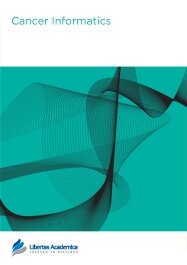

Publication Date: 18 Apr 2011
Type: Short Report
Journal: Cancer Informatics
Citation: Cancer Informatics 2011:10 121-131
doi: 10.4137/CIN.S6670

Living on earth, we are exposed to ultraviolet (UV) light as part of the solar radiation. UVB spectrum light exposure contributes to the development of skin cancer by interacting with pyrimidine pairs to create lesions called cyclobutane pyrimidine dimers. If these lesions are not removed by nucleotide excision repair, they often give rise to C to T transition mutations. Based on these observations, a bioinformatics approach was used to predict the vulnerability of human protein coding genes to UVB induced loss of function mutations. This data was used to evaluate in depth those genes associated with malignant melanoma. In addition, we demonstrate a method of genetically engineering genes that significantly improves resistance to UVB loss of function mutations.
PDF (571.12 KB PDF FORMAT)
RIS citation (ENDNOTE, REFERENCE MANAGER, PROCITE, REFWORKS)
Supplementary Files 1 (6.23 MB ZIP FORMAT)
BibTex citation (BIBDESK, LATEX)
XML
PMC HTML

Cancer Informatics has become an increasingly important source for research in the methodology of cancer genomics and the novel use of informatics technology. I have been impressed by the journal's contents and have been very gratified by the number of accesses to my recent publication. Cancer Informatics has filled an important gap in cancer research journals.

All authors are surveyed after their articles are published. Authors are asked to rate their experience in a variety of areas, and their responses help us to monitor our performance. Presented here are their responses in some key areas. No 'poor' or 'very poor' responses were received; these are represented in the 'other' category.See Our Results
Copyright © 2014 Libertas Academica Ltd (except open access articles and accompanying metadata and supplementary files.)
Facebook Google+ Twitter
Pinterest Tumblr YouTube